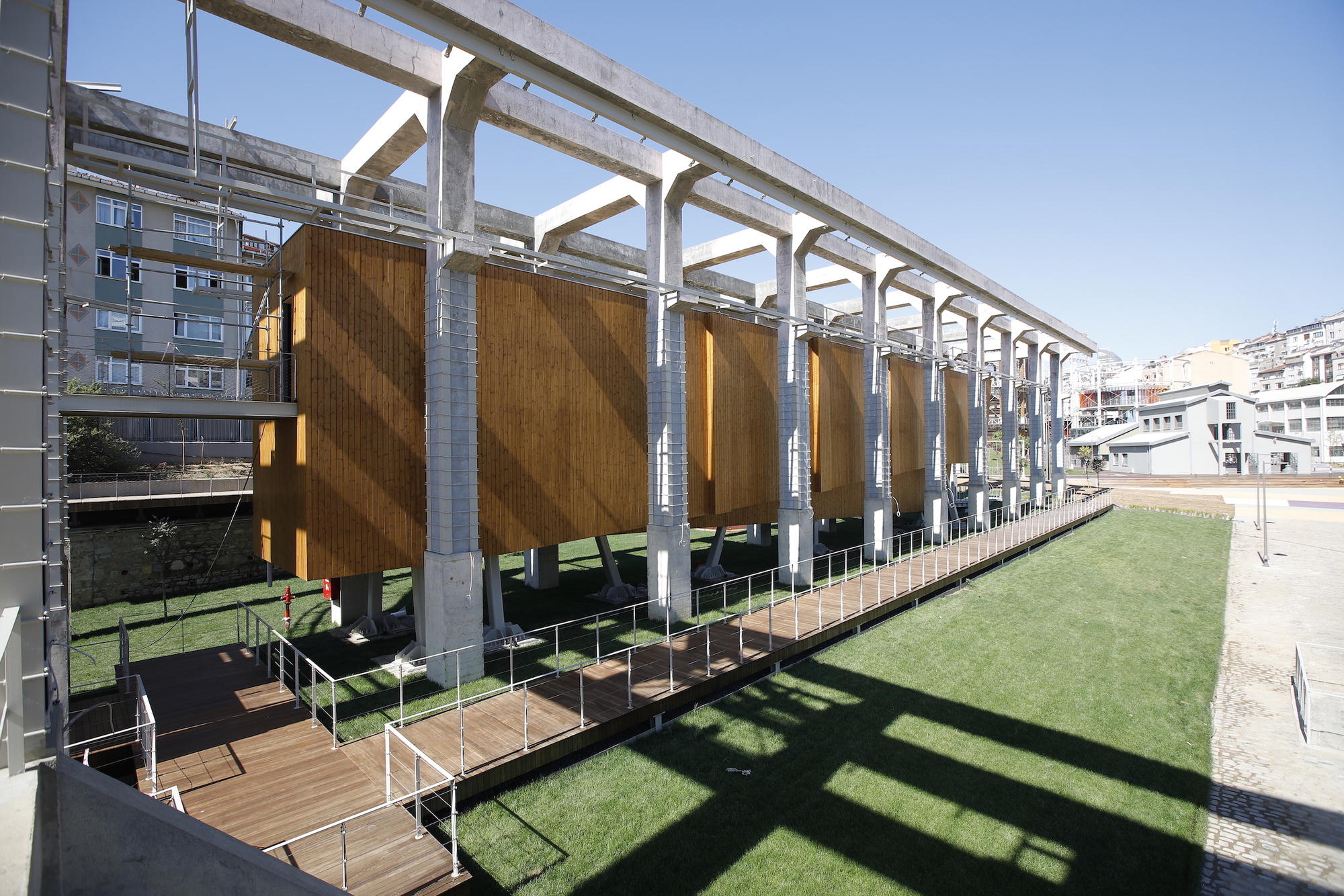How Thermal Modification Can Make Wood in Architecture Last a Lifetime
How Thermal Modification Can Make Wood in Architecture Last a Lifetime
Wood is a material with unique characteristics –such as its natural warmth and tactile quality– capable of providing a sense of comfort and well-being, evoking emotions and memories, and creating a cozy atmosphere in interior spaces. Its versatility allows it to be used in building structures, for solar protection, or as interior cladding, and it can be molded, carved, and jointed to create a variety of forms, from simple to complex designs. When properly maintained and kept in ideal conditions, wood can last for hundreds of years. However, as a natural material, it is susceptible to degradation over time due to biological, chemical and environmental factors, which can result in rotting, cracking, erosion and the loss of physical properties.
To mitigate this issue, there are preservation techniques that aim to improve the durability, stability, and resistance of wood to adverse factors, prolonging its life and performance. Among these techniques are treatments with chemical products, the application of pressure, and thermal modification.
Thermal modification to improve wood durability
Thermal modification is a natural process that involves exposing wood to high temperatures in kilns, ranging from 160°C to 230°C. When heat is applied to the wood, its moisture content is decreased to almost 0%. In this process, some of the bonding water (OH) is removed from the wood cells, as these absorb the free water (H2O) inside the cells and increase the humidity of the wood, causing deformations. By eliminating much of these two components (bonding water and free water), thermal modification provides stability. After this, steam is applied to the wood, causing its humidity to vary between 4% and 7% and making it a living product again. On very humid days, the pieces do not exceed the 12% moisture limit, resulting in a more stable, durable material that is resistant to deterioration and moisture.
G Wood Pro is one of the leading companies in the industry specializing in ThermoWood, and is an exclusive distributor of products from the Turkish company Tantimber, manufacturer of Thermally Modified Timber (TMT) under the standards of the International ThermoWood Association. The process involves the selection of wood pieces, careful control of temperature, moisture content and duration of the heat treatment to achieve consistent, high-quality results. This reduces the risk of warping, cracking, and chipping, ensuring the longevity of the material even in adverse weather conditions.
Advantages of thermally modified wood
One advantage of ThermoWood is that the pieces retain their beautiful natural appearance, with rich color and texture, adding warmth and character to any project. The pieces can be left untreated to age over time, or treated with varnishes and oils to achieve a specific result. In the case of Pre-Aged Thermowood, the process gives the wood an aged rustic appearance without any actual wear, which can be aesthetically appealing in certain uses.
Usually made of softwood species from sustainably managed forests, such as pine or spruce, thermally modified wood is an environmentally responsible choice for green building projects, as it is obtained from renewable and responsible sources and contributes to the preservation of forests and the reduction of the environmental impact of construction.
In addition, due to their greater durability and resistance to deterioration and moisture, these products require minimal maintenance compared to untreated wood, which can save time, effort and costs associated with regular maintenance and refinishing.
A madeira termicamente modificada pode ser utilizada em uma ampla variedade de aplicações. Externamente, pode ser usada em fachadas, decks, revestimentos de paredes, pergolados, entre outros. Internamente, pode ser aplicada em pisos, painéis, revestimentos de teto, mobiliário, entre outros.
Thermally modified wood can be used in a wide variety of applications. Externally, it can be used in facades, decks, wall coverings, pergolas and more. Internally, it can be applied on floors, panels, ceiling coverings, furniture, among others.
By applying techniques that considerably increase the durability of wood, we can make sure that trees have not been cut in vain and that this noble natural material can be used to its full potential. Wood is a key material to promote greater sustainability in the construction industry and can replace other more environmentally damaging materials, such as concrete and steel, in various applications, significantly reducing the carbon footprint of buildings. In addition, it also provides features of touch, warmth, heat and even smell that are unique to it, and can be used responsibly and durably in a wide range of applications, adding aesthetic and functional value to projects.
This article is part of the ArchDaily Topics: The Future of Wood in Architecture presented by Tantimber ThermoWood.
Tantimber ThermoWood brings the timeless warmth of wood to modern design. Natural, renewable, and non-toxic, they transform sustainably sourced wood species into dimensionally stable and durable wood products for use in residential and commercial building and design projects. Find out more about how the enduring beauty of ThermoWood brings warmth to the built environment.
Every month we explore a topic in-depth through articles, interviews, news, and architecture projects. We invite you to learn more about our ArchDaily Topics. And, as always, at ArchDaily we welcome the contributions of our readers; if you want to submit an article or project, contact us.




